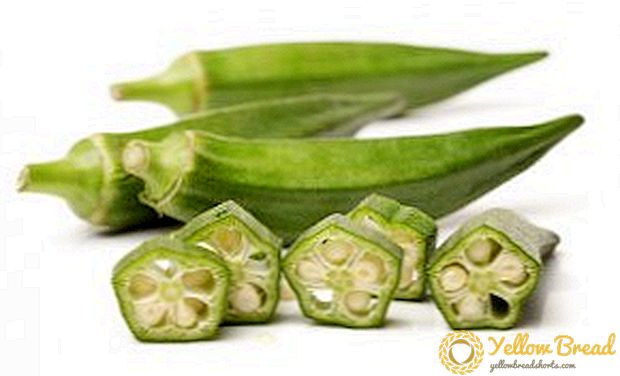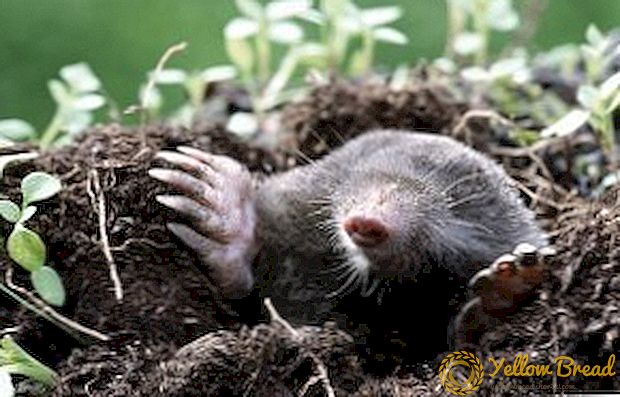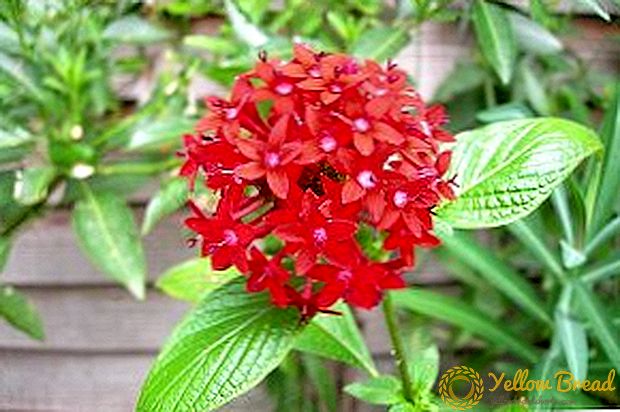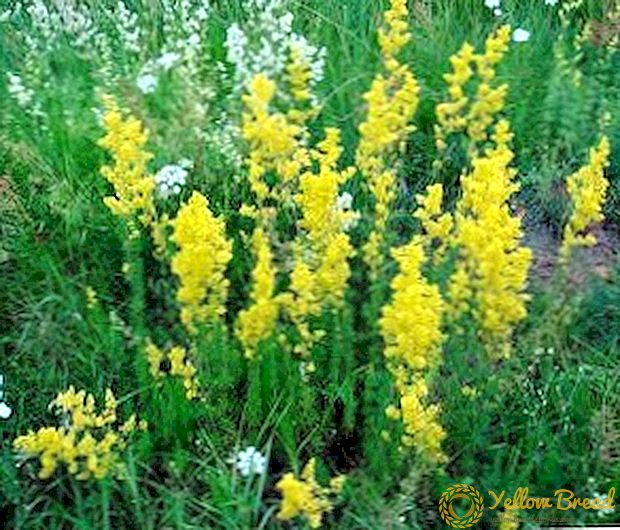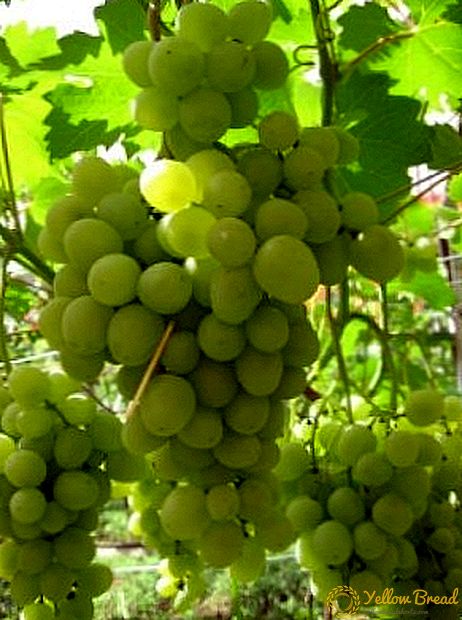
“Eagle Beak” - An interesting and unusual variety of tomatoes.
It has a high yield, not too picky about care.
On high and powerful bushes juicy and sweet fruits of beautiful coracid form ripen, which are good both in salads and in pickling.
Tomato "Eagle beak": description and characteristics of the variety
The grade of the Russian selection intended for cultivation in an open ground, film hotbeds and greenhouses. Harvested fruits are well stored and transported.
 Eagle's beak is a variety of large-fruited middle-ripened tomatoes. The bush is semi-determinant, 1.2-1.5 m high. For successful development and good fruiting, formation and tying are required. Very good yield, you can collect up to 8 kg of tomatoes from one bush.
Eagle's beak is a variety of large-fruited middle-ripened tomatoes. The bush is semi-determinant, 1.2-1.5 m high. For successful development and good fruiting, formation and tying are required. Very good yield, you can collect up to 8 kg of tomatoes from one bush.
Advantages and disadvantages
Among the main advantages of the variety:
- excellent yield;
- high taste of fruits;
- beautiful fruits of unusual shape;
- resistance to major diseases.
The disadvantages are minor: Bushes are not too high, but powerful and sprawling, they need tying and pasynkovane. The plant is demanding on the nutritional value of the soil, likes abundant watering and frequent feeding.
Characteristics of tomato "Eagle beak":
- Fruits are large, even, the weight of individual copies reaches 800 g.
- In the first phase of fruiting tomatoes are larger, the subsequent smaller, 200-400 each
- The unusual coracoid shape with a pointed and slightly curved tip deserves attention.
- The flesh is juicy, dense, low seed.
- Taste is saturated, sweetish.
- Dense glossy peel protects the fruit from cracking.
The variety is universal, tomatoes are suitable for fresh consumption, preparation of salads, hot dishes, soups, juices. Unusual fruits are good for canning, salted or pickled tomatoes look very nice in banks.
A photo
We invite you to familiarize yourself with the Eagle Beak variety tomatoes on the following photo materials:




Features of growing
Seeds are sown on seedlings in March or early April. Tomatoes need a light fertile soil consisting of a mixture of garden soil and humus.
In the formation phase of 2 true leaves, seedlings are swooping in separate pots. Watering is moderate, only with warm settled water. Immediately after the picking, fertilizing with a liquid complex fertilizer is recommended. Another feeding is carried out before moving the seedlings to a permanent place.
Planting under a film or a greenhouse is possible in the first half of May; plants are planted in the open ground closer to the beginning of June. The soil should be completely warm. Before planting, the soil is loosened, phosphorus and potash fertilizers are laid out in each well (no more than 1 tbsp). Landings are not thickened by 1 square. m place no more than 3 plants.
Watering plentiful, but not frequent (1 time in 6-7 days). In season, the plants need to feed 3-4 times. It is recommended to alternate between organic matter and complex mineral fertilizers with a predominance of potassium and phosphorus. After the start of flowering, nitrogenous supplements are canceled, they can slow down the formation of ovaries. Shrubs form in 1 or 2 stems, removing stepchildren and lower leaves.
Pests and diseases
 The variety is resistant to the main diseases: late blight, fusarium, tobacco mosaic.
The variety is resistant to the main diseases: late blight, fusarium, tobacco mosaic.
To completely secure the landing, you need to take preventive measures. The ground for seedlings is ignited in the oven; before planting in the greenhouse, the ground is spilled with a hot solution of potassium permanganate.
For the prevention of fungal diseases, seedlings are regularly sprayed with phytosporin or other non-toxic bio-preparations. It will help and pale pink solution of potassium permanganate. With the threat of late blight, plantings are sprayed with copper-containing preparations.
Industrial insecticides or proven folk remedies can be used against insect pests: soapy water, a solution of potassium permanganate and liquid ammonia,decoction of onion peel, chamomile, celandine. Frequent airing of greenhouses and weeding is recommended.
Planting several bushes Eagle Beak in the greenhouse, greenhouse or open field, gardeners can count on an excellent harvest. If desired, the seeds for the next crop can be collected independently.

